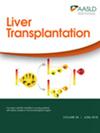根据 ABO 血型利用边缘供体器官进行肝移植的存活率。
IF 4.7
2区 医学
Q1 GASTROENTEROLOGY & HEPATOLOGY
引用次数: 0
摘要
背景目前的肝移植(LT)分配政策侧重于终末期肝病模型(MELD)评分,往往忽略了血型和生存获益等因素。本研究使用器官共享联合网络的国家登记数据库(2003-2020 年)来确定每种 ABO 血型的 LT 特征,并根据生存获益情况确定每种血型的最佳 MELD 3.0 分。其中,87,409 人(58.0%)接受了 LT(A:32,156,AB:4,362,B:11,786,O:39,105)。AB 组和 B 组的移植率较高,移植时的 MELD 3.0 评分中位数较低(AB:21,B:24 vs. A/O:26,P<0.01),等待时间较短(AB:101 天,B:172 天 vs. A:211 天,O:201 天,P<0.01)。A型和O型受者更倾向于心脏死亡后捐献(DCD)。生存获益分析表明,B血型移植所需的MELD 3.0评分高于A和O血型(脑死亡后捐献移植:B血型≥15分,A/O血型≥11分;DCD移植:B血型≥21分,A血型≥11分,O血型≥15分)。这就要求制定个性化的LT政策,推荐更高的MELD 3.0阈值,尤其是对于B型血的患者。本文章由计算机程序翻译,如有差异,请以英文原文为准。
Survival benefit of liver transplantation utilizing marginal donor organ according to ABO blood type.
BACKGROUND
The current liver transplantation (LT) allocation policy focuses on the Model for End-Stage Liver Disease (MELD) scores, often overlooking factors like blood type and survival benefits. Understanding blood types' impact on survival benefits is crucial for optimizing the MELD 3.0 classification.
METHOD
This study used the United Network for Organ Sharing national registry database (2003-2020) to identify LT characteristics per ABO blood type and to determine the optimal MELD 3.0 scores for each blood type, based on survival benefits.
RESULTS
The study included LT candidates aged 18 years or older listed for LT (total N=150,815; A:56,546, AB:5,841, B:18,500, O:69,928). Among these, 87,409 individuals (58.0%) underwent LT (A:32,156, AB:4,362, B:11,786, O:39,105). Higher transplantation rates were observed in AB and B groups, with lower median MELD 3.0 scores at transplantation (AB:21, B:24 vs. A/O:26, p<0.01) and shorter waiting times (AB:101 days, B:172 days vs. A:211 days, O:201 days, p<0.01). A preference for Donation after Cardiac Death (DCD) was seen in A and O recipients. Survival benefit analysis indicated that B blood type required higher MELD 3.0 scores for transplantation than A and O (Donation after Brain Death transplantation: ≥15 in B vs. ≥11 in A/O; DCD transplantation: ≥21 in B vs. ≥11 in A, ≥15 in O).
CONCLUSION
The study suggests revising the allocation policy to consider blood type for improved post-LT survival. This calls for personalized LT policies, recommending higher MELD 3.0 thresholds, particularly for individuals with type B blood.
求助全文
通过发布文献求助,成功后即可免费获取论文全文。
去求助
来源期刊

Liver Transplantation
医学-外科
CiteScore
7.40
自引率
6.50%
发文量
254
审稿时长
3-8 weeks
期刊介绍:
Since the first application of liver transplantation in a clinical situation was reported more than twenty years ago, there has been a great deal of growth in this field and more is anticipated. As an official publication of the AASLD, Liver Transplantation delivers current, peer-reviewed articles on liver transplantation, liver surgery, and chronic liver disease — the information necessary to keep abreast of this evolving specialty.
 求助内容:
求助内容: 应助结果提醒方式:
应助结果提醒方式:


